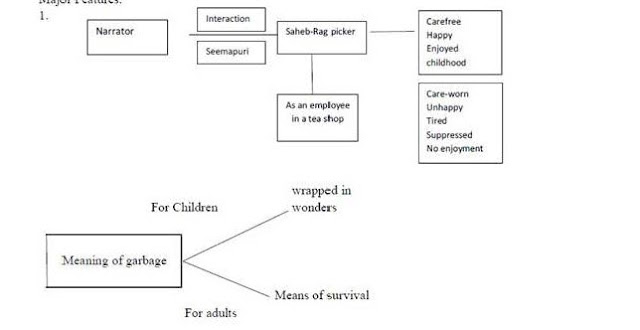An Elementary School Classroom in a Slum (Structure & Poetic Devices)
Structure
‘An Elementary School Classroom in a Slum’ by Stephen Spender is in free verse. There are some imperfect rhyme schemes in the poem. While taking the poem as a whole the rhyme scheme does not seem to follow a specific order. The loose lines without any intricately woven decorum depict the poet’s disillusionment of any kind of order. Whatsoever, the text of the poem contains four stanzas. Each stanza of the poem consists of eight lines having uneven line lengths.
Poetic Devices, Stanza by Stanza
‘An Elementary School Classroom in a Slum‘ by Stephen Spender contains some important poetic devices which bring out the internal meaning of the lines. The literary devices used in each stanza are significant concerning the theme of the poem.
Stanza 1
(…)
Of squirrel’s game, in tree room, other than this."
In the first stanza of the poem, Stephen Spender uses a simile while comparing the “children’s faces” to “rootless weeds”. “The paper-seeming boy” is a metaphor. It signifies the weak health of the boy. In the following line, the poet makes use of zeugma. It is a zeugma since the verb “reciting” in this line applies to the “gnarled disease” and “his lesson”. There is a synecdoche in the line, “His eyes live in a dream” in which the poet refers to the eyes of the boy in place of himself.
In the first lines of this stanza, there is a metonymy. The poet refers to the works of Shakespeare by using only his name. There is a climax in the phrase, “ships and sun and love”. The use of “and” twice in this line makes it also an example of polysyndeton. “Cramped holes” is a metaphor for slum houses. The poet makes use of rhetorical question or interrogation in these lines, “For lives that slyly turn in their cramped holes/ From fog to endless night?” Structurally, the meaning of these lines becomes clear when the part of it in the following line is added to the former one. It is called enjambment. There are many instances where the poet uses this device to intricately connecting the sense of the lines. There is a simile in the comparison between “spectacles” and “bottle bits of stones”. In the last line, there is another simile.
Stanza 2
(…)
Far far from rivers, capes, and stars of words."
In the second stanza, “sour cream walls” is a metaphor. Here the poet compares the color of the sour cream with the wall’s color. There is a personification in the line, “civilized dome riding all cities.” There is a metonymy in the line, “Awarding the world its world.” In this case, the poet refers to the privileged class by using the word “world”. The variety of metonymy used here is, the container for the thing contained. The poet makes use of another metaphor by comparing the window of the class to the poor children’s world. It is a reference to nature outside the windows. In the upcoming lines, “future’s painted with a fog”, “lead sky” and “stars of words” are also metaphors. Apart from that, the poet uses alliteration in the following phrases, “Street sealed” and “Far far from”.
Stanza 3
(…)
So blot their maps with slums as big as doom."
In the first lines of this stanza, there is a metonymy. The poet refers to the works of Shakespeare by using only his name. There is a climax in the phrase, “ships and sun and love”. The use of “and” twice in this line makes it also an example of polysyndeton. “Cramped holes” is a metaphor for the slum houses. The poet makes use of rhetorical question or interrogation in these lines, “For lives that slyly turn in their cramped holes/ From fog to endless night?” Structurally, the meaning of these lines becomes clear when the part of it in the following line is added to the former one. It is called enjambment. There are many instances where the poet uses this device for intricately connecting the sense of the lines. There is a simile in the comparison between “spectacles” and “bottle bits of stones”. In the last line, there is another simile.
Stanza 4
(…)
History theirs whose language is the sun."
“Unless, governor, inspector, visitor”, is an anticlimax. Here the poet uses this order for the sake of poetic irony. In the line, “That shut upon their lives like catacombs” the poet uses a simile to compare their slum to “catacombs”. There is an apostrophe in the fourth line as the poet invokes the children to break their barriers. The phrase “gold sands” might be a metonymy as it is a reference to the color of sands under sunlight. There is a personification in the line, “white and green leaves open…” The last line contains a natural metaphor. The poet uses the sun as a symbol of nature as well as power in this line. Hence it is also an instance of metonymy.
Historical Context
Stephen Harold Spender the poet of ‘An Elementary School Classroom in a Slum’ mostly concentrated on the themes of social injustice and class struggle in his works. He had a bent towards socialism and the ideals of Marxism. Like his other works, Spender voices his opinion against Capitalism and its effects in this poem. There are certain areas where the poem reflects Spender’s disgust for the privileged class. He is sympathetic towards the people of slums. Their condition pains the poet deep. But he is not a silent listener. The last stanza of the poem makes it clear to the readers.


